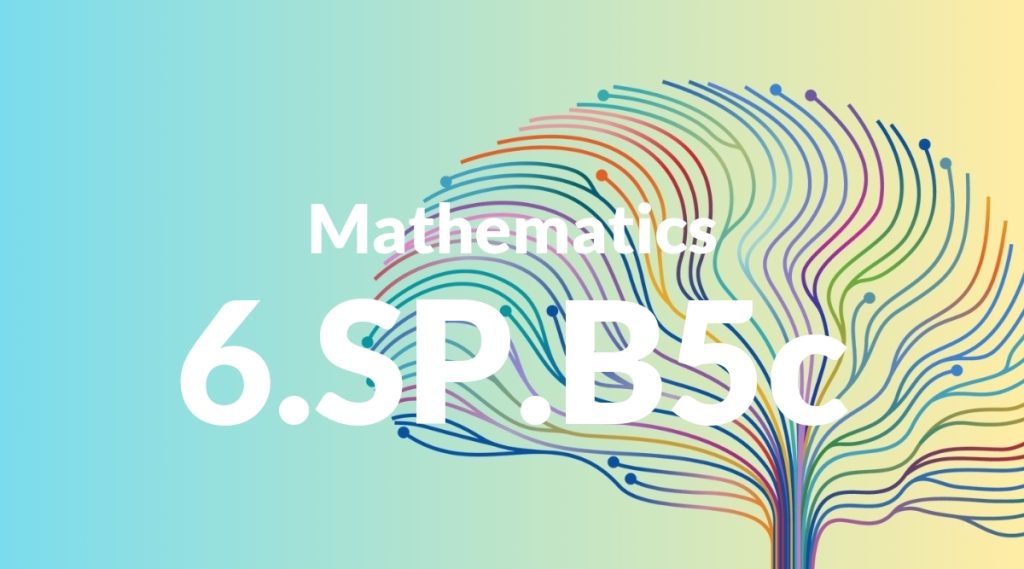Standard: 6.SP.B5c – Giving quantitative measures of center (median and/or mean) and variability (interquartile range and/or mean absolute deviation), as well as describing any overall pattern and any striking deviations from the overall pattern with reference to the context in which the data were gathered.
Grade level: Grade 6
Subject: Mathematics
Domain: Statistics & Probability
Teacher Overview
This standard focuses on helping students understand and calculate measures of center and variability in data sets. It is crucial for developing statistical literacy, which is an essential skill for analyzing and interpreting data in various contexts. Students should be comfortable with basic arithmetic operations and have an introductory understanding of data collection and representation.
After mastering this standard, students will be able to interpret more complex data sets and apply statistical reasoning to real-world problems, enhancing their overall data literacy.
Common Misconception 1
A common misconception is that the mean and median are always the same. This is incorrect because the mean is the arithmetic average, while the median is the middle value in a data set. They can be different, especially in skewed distributions.
Intervention 1
To address this, teachers can use data sets where the mean and median are noticeably different and have students calculate both to see the difference.
Common Misconception 2
Another misconception is that measures of variability are unnecessary if the mean or median is known. This is incorrect because measures of variability provide insight into the spread and consistency of the data, which the mean or median alone cannot.
Intervention 2
Teachers can present scenarios where understanding the spread of data is crucial, such as comparing test scores from different classes to determine consistency.
Prerequisite Knowledge
Students should understand basic arithmetic operations, be familiar with the concepts of data collection, and have a fundamental grasp of what a ‘mean’ and ‘median’ represent.
Subsequent Knowledge
Students will develop skills in interpreting more complex data sets, understanding standard deviation, and applying statistical reasoning to real-world problems.
Instructional Activities
- Calculate the mean, median, and interquartile range of a given data set.
- Create visual representations of data (e.g., box plots) to illustrate measures of center and variability.
- Analyze real-world data sets and discuss findings in small groups.
- Use software tools to compute statistical measures and interpret results.




